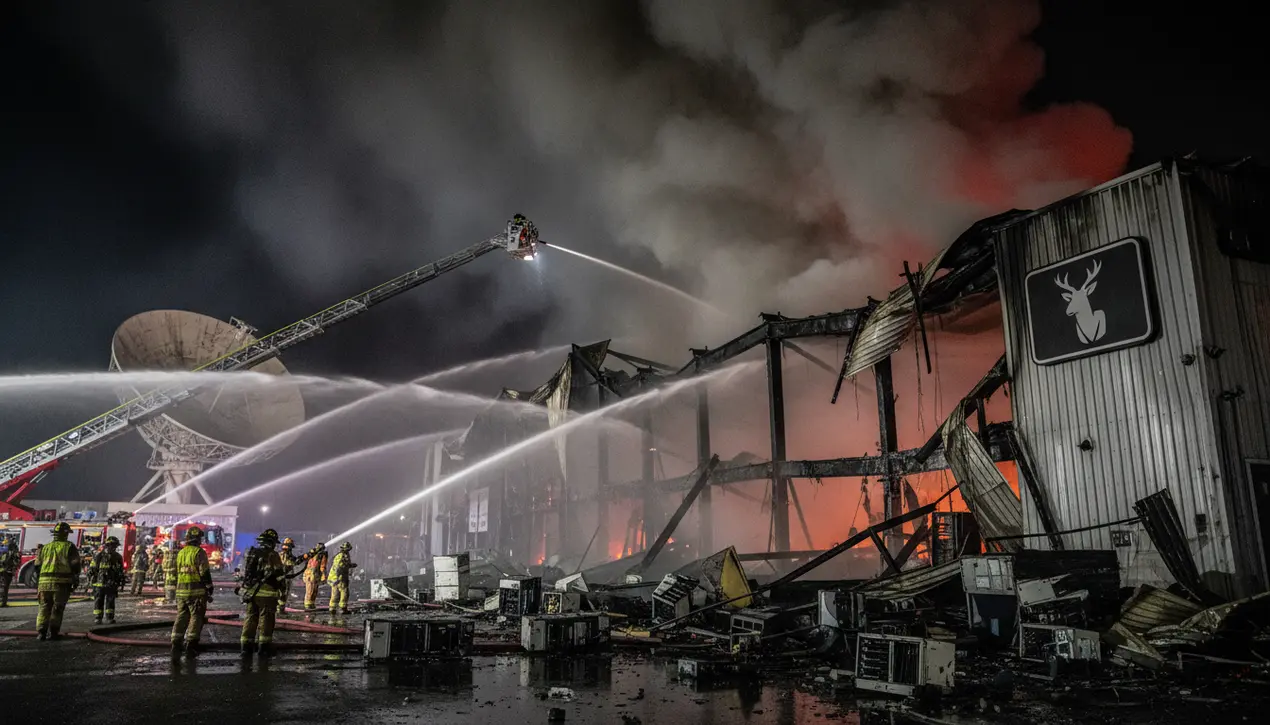
Fire breaks out at Bitdeer bitcoin mining facility in Ohio, no injuries reported
UN
4 weeks ago7 min read
A fire erupted at a Bitdeer bitcoin mining facility in Ohio, a stark reminder of the physical realities underpinning our digital fortress, though thankfully no injuries were reported. This incident, however, landed with the subtlety of a sledgehammer on the same day Bitdeer's shares plummeted over 30% following a disappointing third-quarter earnings release—a one-two punch that should have every serious investor questioning the operational fragility masked by so much industry hype.Let's be clear: this isn't just a minor operational hiccup; it's a symptom of a larger disease infecting the mining sector, a desperate rush for scale that often overlooks the fundamental, brick-and-mortar necessities of running what is essentially a power-hungry industrial operation. Ohio, with its specific energy grid dynamics and regulatory environment, becomes a critical case study.We're talking about facilities that consume power on par with small cities, and when corners are cut—whether in electrical system overloading, inadequate cooling for the relentless hum of ASICs, or lax fire suppression protocols—the result is often a spark that turns millions of dollars of hardware into molten slag. This event echoes past catastrophes at other mining farms, from the submerged GPUs in a Chinese facility flood to the entire data centers lost in Kazakhstan's political unrest, proving that the 'immutable' ledger is secured by profoundly mutable and vulnerable physical infrastructure.The market's reaction was swift and brutal, wiping out nearly a third of Bitdeer's value, a clear signal that institutional patience for such setbacks is thin. Analysts I've spoken to, those who've been in the trenches since the early days of mining in upstate New York warehouses, point to this as a classic 'black swan' event for a publicly-traded miner—an unpredictable catastrophe that exposes underlying risk factors the prospectus conveniently glossed over.The conversation immediately turns to insurance, a nightmare for these operations where the asset value is both the expensive hardware and the potential future bitcoin it could mine, creating a complex valuation puzzle that most traditional insurers still don't fully grasp. Furthermore, this fire ignites a broader debate about the geographical concentration of mining power post-China's crackdown.The U. S., and specifically states like Texas and Ohio, have become new epicenters, but with that comes immense pressure on local grids and, as we see now, a heightened risk profile. The contrarian take, the one the weak-handed altcoin crowd will never understand, is that this actually underscores Bitcoin's core resilience.The network hash rate might dip momentarily if a facility of this scale goes offline, but the protocol simply adjusts, and other miners pick up the slack. It's a testament to the antifragility of the Bitcoin network itself, even as individual players within it prove to be fallible.
#featured
#Bitdeer
#bitcoin mining
#fire
#Ohio
#facility incident
#no injuries
#shares drop
Stay Informed. Act Smarter.
Get weekly highlights, major headlines, and expert insights — then put your knowledge to work in our live prediction markets.
Related News
Comments
Loading comments...
© 2025 Outpoll Service LTD. All rights reserved.